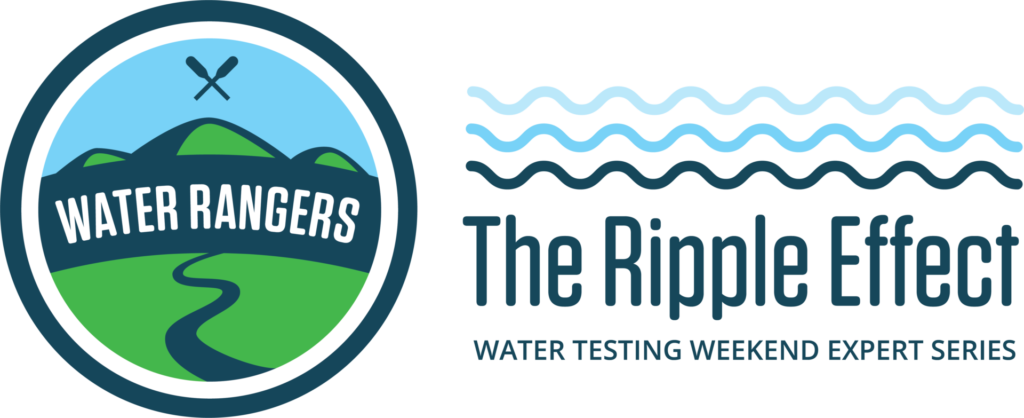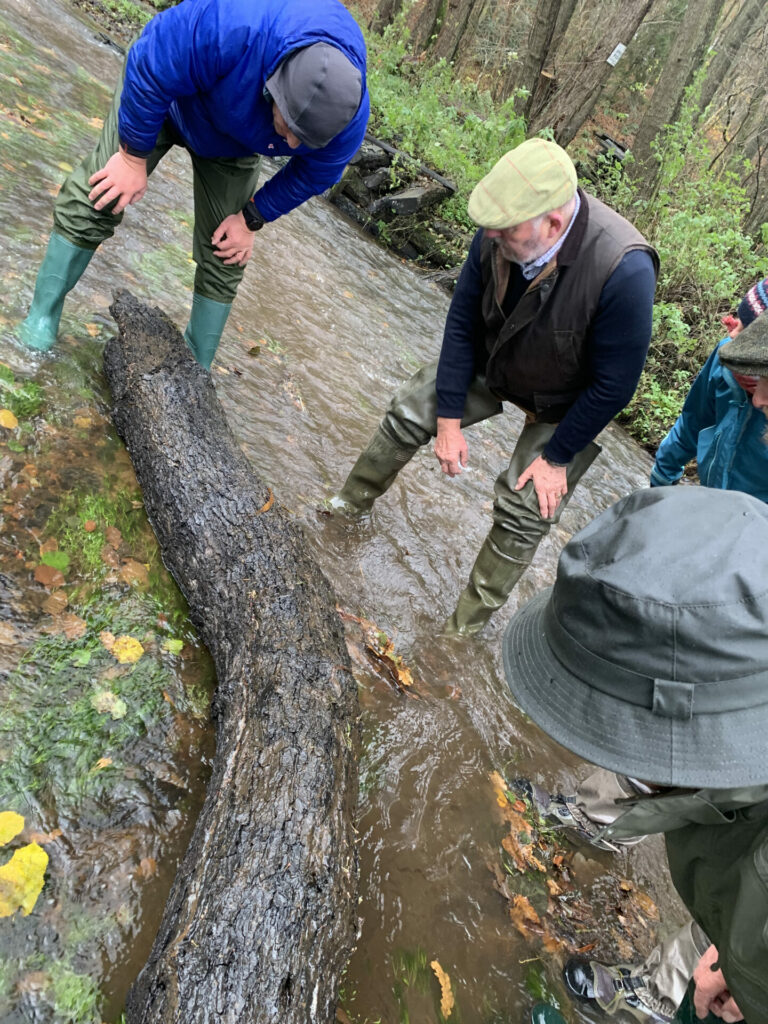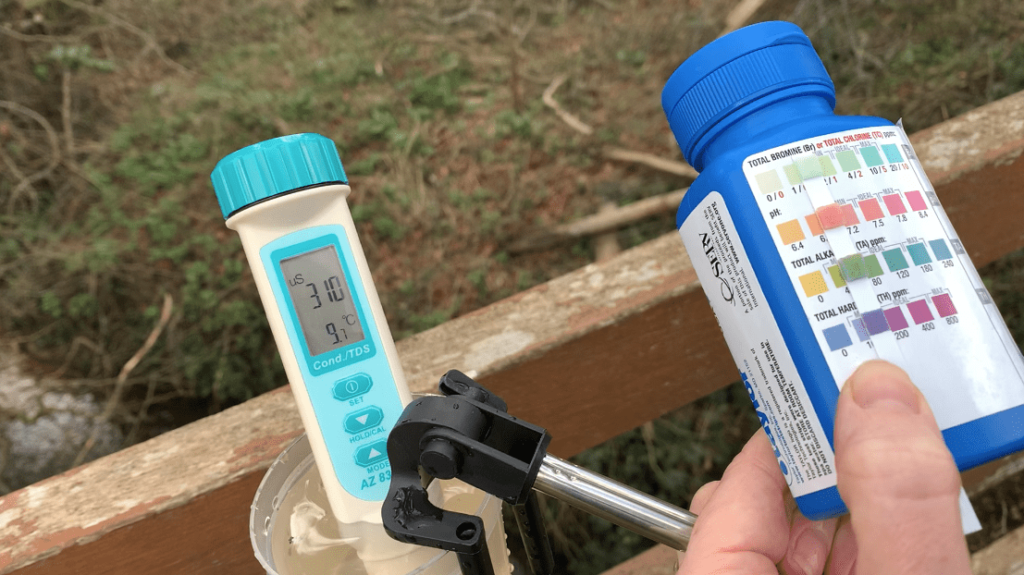The Ripple Effect: Episode # 1
By the Wey: The River Wey Trust

Welcome to the first edition of The Ripple Effect! Each month, we’ll be hosting Water Testing Weekend. On Water Testing Weekend (the last Sunday of every month), we encourage you to get out and test your local waterway (alternative testing days as Saturday and Monday). As part of these water testing celebrations, we’ll host water testing and stewardship activities, with interviews with experts and community members. The Ripple Effect will be shared on the Friday of testing weekends.
When it comes to protecting waterways, community-based water monitoring is often just one piece of an incredible ecosystem of actions. So, we’ve recruited experts to help us all deepen our knowledge and bring us new ideas. They’re community champions, data experts, scientists, knowledge holders, and more. Join us as we learn from these experts and deepen our knowledge of the monitoring ecosystem!
Introducing… The River Wey Trust
Our first expert is the River Wey Trust. The trust, based in Liphook, England, was founded to preserve the roots of the agricultural history of the region. Interestingly, the town also has strong Canadian ties- Canadian soldiers were based there during the two world wars. Many residents even have Canadian relatives!
The River Wey Trust’s has worked on some of the ancient structures over the past few years, especially aqueducts and water meadows from the 17th and 18th centuries. They’re currently developing a historical water meadow and a gathering space for the community to interact with the river. Recently, they started water quality monitoring as part of their stewardship for the river! In this video, Kat Kavanagh, our founder, interviews Simon Bleach and Alistair Young, two of the Trustees. We’re introduced to the Trust’s work and their efforts to establish their water monitoring program to better understand the health of their river.
A Canadian connection!
Your author today is Kat, Water Rangers’ Executive Director. I’ve recently put down roots in Liphook; I’ll be spending my winters here and I’ve recently joined the River Wey Trust as a Trustee. Imagine my surprise that almost every person I meet has a Canadian relative! This is no accident: during both World Wars, Canadian soldiers were trained in Liphook and Bramshott, two small villages in the southeast of England. The Canadian memorial includes a walkway lined with spectacular maple trees and sites at local churches for war graves. Seeing so many from 1918 who died at the age of 21 makes you pause; they were most likely 18 or younger when the war started. Many who stayed after the war died from the Influenza epidemic. Every year, local students, along with veterans, visit the graves to lay a wreath to commemorate the soldiers and learn about their Canadian connection.
Founded on a passion for architecture and a love for a river
The River Wey Trust (founded in 1984) is a collaborative group, combining both grassroots volunteers and input from local county councils and preservation societies, all of which nominate a Trustee to help guide its activities. This structure means that you’ll often see local governments joining in the ‘fun’, helping with restoration and water testing!
If you’re just learning about the River Wey Trust, though, it won’t be long before you hear the name “Adrian Bird”. Adrian was an architect who devoted most of his free time to the group. His passion for the river and its history allowed the Trust to restore and maintain its historical aqueducts and other architectural features, as well as support education and environmental monitoring. The drawings that are part of the signs at historical sites were all drawn by Adrian.
Sadly, Adrian passed away just over a year ago. Many of the other Trustees were close friends of Adrian’s and want to continue his legacy through the Trust. “How can we keep the work alive?” is a question that comes up regularly. They’re doing amazing things, as you’ll see!
Restoration in action
On the first Saturday of the month, the Trust holds a “working party” where they clear brush and invasive species to restore Allee’s Meadow. This region holds strong historical agricultural significance: for 300 years, until the 1930s, Allee’s Meadow was used to grow hay and was irrigated from the river. The system started as an aqueduct 1km away and then water was fed through a sluice, then through a complex ‘ridge-and-furrow’ irrigation layout on the valley floor.
Learn more
Read more about Allee’s Meadow and water meadows.
Today, the upper part of the meadow is a managed grassland and the lower level is a wetland. The Trust owns this land and is working towards recreating the historical agricultural system. It will be part of a space for the public to learn about the history and health of the river. The restoration work includes plans to build a boardwalk along the river, with access for youth (and young at heart) to get into the river and learn about water science!
Sometimes, the work parties end up being more urgent and practical: the region was hit with a powerful windstorm at the end of February that took down a 100-year old oak tree at Allee’s Meadow. Volunteers have been working on clearing the tree. The next working party will be on April 2nd at 9:30am. All are welcome!
Teaching the next generation!
Alistair Young, one of the Trustees, has been a huge champion for water education in the region. He visits schools across the region almost every week, teaching hundreds of youth how rivers work. One day he taught over 200 youth! By experiencing how hydrology works with their hands, these young scientists begin their understanding of waterways and their importance.
They’re now looking to combine the ‘sandbox’ experience with water testing into a local Beaver group as well as the local senior school.
Water testing
Last year, Peter Francis from Frensham Fly Fishers trained volunteers on how to test for macro-benthic invertebrates (the insects that start their lives in the water) using the RiverFly Method. Basically: you ‘kick’ the rocks in the river into a net and collect the life within. From there, you’re looking for key sensitive species and counting them. The more sensitive species you find, the better your water quality, as sensitive species don’t survive in poor water quality.
Peter, who has been monitoring the River Wey further upstream for over 20 years, visited the Trust’s first session at Allee’s meadow and continued to astound us with his abilities to spot sensitive species! We still send him pictures of new species we find for identification. Peter has been working to restore his stretch of the river’s benthic abundance after a pesticide entered the river 12 years ago, affecting the entire ecosystem’s health for quite a distance of the river.

Bringing in the chemistry testing!
We’ll continue to conduct monthly kick testing at Allee’s meadow. But that means there’s lots of the river that isn’t being monitored regularly. So, the Trust is establishing a monthly water chemistry program using the Water Rangers testkits as well as the nutrient testing from Freshwater Watch (we’re hoping to work more closely with these water champions… stay tuned!). The Trust is establishing some regular sample locations that are of interest, giving us a snapshot of the river’s health each month. Combined, they’ll allow volunteers to monitor more parts of the river and become the eyes on the ground, increasing their understanding of what’s normal and helping the Trust act when things aren’t right!
Interested in water testing, too?
Visit our online store to check out what kind of water testing kits we have available for purchase.
We’ll make sure the data that we collect can be shared and used with whoever is tracking in the region. The River Wey Trust posts their results on their website, too. It includes a snapshot of Allee’s Meadow testing results from the Water Rangers website. You can see the group’s testing locations using the group feature of Water Rangers.
We’re building this water monitoring program slowly, and seeing how we can work with other amazing local environmental groups in the region (such as Frensham Fly Fishers, ZERO Guildford, and more). If you’re in the region, you can email the Trust to become a water tester. You’ll be testing on the last Sunday of every month, with a commitment of one hour.

What can we learn and apply to our own work?
It’s been such a pleasure learning about the local conservation work on the River Wey and to hear about the passion and legacy that is integral to this work. Groups do water conservation in many different ways; every region has different issues and priorities, and there are lots of ways to get involved… water testing is just one way. We’re so excited to help groups like the River Wey Trust amplify their efforts and recruit new volunteers!
Going out with experts and groups also helps us learn. Here’s my final thought from this experience working with the River Wey Trust over this past month. Enjoy!
Questions to ask yourself
As part of this expert series, we encourage you to think about how you can apply ideas to your own work. Here’s some to get you started:
- Do you know the history of your region? If you’re in Canada, do you know whose traditional lands you’re on? How could you get to know the history better?
- Are there local groups in your region working to preserve the history and health of their local waterways? What can you learn from them? How can you help?
- What’s the closest waterbody to you? Do you know how healthy it is? See if you can find any data about its health online. If not, it could be data deficient, and in need of someone like you to start monitoring it!
- Pesticides negatively affected a considerable stretch of the River Wey. Think of the products you use in your home or yard- might they have the potential to affect your local waterbodies, too?
Next month’s expert will be Annie Michaud from Niagara College. It’s been published, so read it here!
Thank you to the National Research Council for helping to fund Water Testing Weekends and this expert series.
